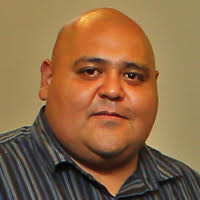UW-Milwaukee student Zachary Jones, 26, still remembers the call he got from his friend, Nate, last spring.
“He said: ‘I’m gonna make this time different. I’m gonna get clean,’” recalled Jones, who said Nate tried but struggled for several years to kick his opioid addiction.
Nate lost his battle in August 2020, Jones said, succumbing to a fatal dose of fentanyl, a synthetic opioid that can kill in trace amounts and has fueled a local and national surge in drug overdoses.
Jones joined others Tuesday at Zeidler Union Square in Downtown Milwaukee to pay tribute to Nate and others during a memorial event marking International Overdose Awareness Day.
The event, hosted by the Milwaukee County Substance Abuse Prevention Coalition, helped put faces behind the grim tally of drug overdose victims, said Jeremy Triblett, prevention coordinator for Community Access to Recovery Services, or CARS. In his role, Triblett works on strategies to prevent suicide, gun violence and opioid abuse in Milwaukee County.
More than numbers
“Sometimes we lose the humanity when we see the numbers,” Triblett said. “This is a way to remember and honor those individuals who passed.”
The event featured grief counselors, speakers providing information on Narcan, a medicine used to reverse the effects of drug overdoses, and others.
Serita Valmond, a chronic pain coach, was there to provide information on using wellness techniques to overcome addiction to pain medicine. Valmond said her car was rear-ended by a drunk driver in 2016, and as a result, she took 15 different prescriptions to manage her symptoms.
“People begin to think that there are no alternatives other than pills to manage pain,” she said.
She used a holistic approach based on nutrition, stress management and other healing approaches to treat her pain and now works to help others do the same.
Also at the event was Captain Gregory Miller, a community paramedic program manager for the Milwaukee Fire Department. Miller shared information about the Milwaukee Overdose Response Initiative, or MORI program. MORI, a partnership between the fire department, Milwaukee Health Department and a number of community partners, involves deploying a rapid-response team to homes or hospitals in hopes that people who survived drug overdoses are ready to try to change.
“Sometimes we’re visiting people who have attempted treatment many times and suffered several near fatal overdoses,” Miller said. “It’s not easy, but we will keep getting out there and keep trying to get people into treatment.”
This year, there have been 197 confirmed drug overdose deaths in the county from January through Aug. 27, with 102 cases pending, according to data provided by Karen Domagalski, operations manager for the Milwaukee County Medical Examiner’s Office. Through the same time period last year, there were 378 drug overdose deaths.
Whites (53 percent) and African Americans (38 percent) make up the largest group of victims, while six percent were Hispanic. Three Native Americans and multi-race individuals, and two East Indian and East Pacific Islanders also died of drug overdoses this year. Three-fourths of all victims were men. The youngest victim was just 1-year-old, while the oldest was 77.
The 53204 ZIP code area on the South Side continues to be the city’s hotspot, losing 31 residents to drug overdoses this year. Also hit hard were neighborhoods in 53208, 53209 and 53212, which lost 21, 18 and 18 residents, respectively.
As the number of deaths continues to rise, the challenge remains in creating effective strategies to treat substance abuse disorders, Triblett said.
“We need to look at folks who may be experiencing poverty, homelessness, illness and all of these other things that become factors for drug misuse,” he said. “We need to take a public health approach to deal with this issue.”
It’s an issue Jones will never forget.
Sitting near a display that featured handwritten notes to loved ones who died of drug overdoses, Jones reminisced about the friend he lost.
“Nate was charismatic, a fun guy who just kind of went with it and was someone you wanted to be around,” he said. “But addiction is hard to escape when the end game is to escape from your reality. And now he’s gone.”
Where you can get help
Drug treatment services in the Milwaukee area are available at the Gateway to Change, 10th Street Comprehensive Treatment Center, Rogers Behavioral Health, West Milwaukee Comprehensive Treatment Center, First Step Community Recovery Center, Meta House, West Allis Community Medical Services, United Community Center and other locations.
Mendez, who is bilingual in English and Spanish, graduated from UW-Milwaukee, with a double major in Journalism and Media Communications and Sociology. In 2008, he won a Society of Professional Journalists' regional award for social columns dealing with diverse issues such as poverty, homelessness and racism. Currently, he's a master's degree student at the Diederich College of Communication at Marquette University.
His interests include scholastic research, social networking and the Green Bay Packers.


.jpeg)


